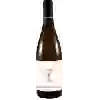
Winery Pas de l'EscaletteMas Rousseau
In the mouth this white wine is a .
This wine generally goes well with vegetarian, poultry or lean fish.
Taste structure of the Mas Rousseau from the Winery Pas de l'Escalette
Light | Bold | |
Dry | Sweet | |
Soft | Acidic |
In the mouth the Mas Rousseau of Winery Pas de l'Escalette in the region of Languedoc-Roussillon is a .
Food and wine pairings with Mas Rousseau
Pairings that work perfectly with Mas Rousseau
Original food and wine pairings with Mas Rousseau
The Mas Rousseau of Winery Pas de l'Escalette matches generally quite well with dishes of pasta, vegetarian or poultry such as recipes of chinese chicken soup, zucchini quiche or traditional welsh dark beer.
Details and technical informations about Winery Pas de l'Escalette's Mas Rousseau.
Discover the grape variety: Hibou blanc
A very old grape variety once cultivated in Savoy, now endangered. It is not the white form of the black owl.
Last vintages of this wine
The best vintages of Mas Rousseau from Winery Pas de l'Escalette are 2017
Informations about the Winery Pas de l'Escalette
The Winery Pas de l'Escalette is one of of the world's greatest estates. It offers 11 wines for sale in the of Languedoc to come and discover on site or to buy online.
The wine region of Languedoc
Languedoc (formerly Coteaux du Languedoc) is a key appellation used in the Languedoc-Roussillon wine region of southern France. It covers Dry table wines of all three colors (red, white and rosé) from the entire region, but leaves Sweet and Sparkling wines to other more specialized appellations. About 75% of all Languedoc wines are red, with the remaining 25% split roughly down the middle between whites and rosés. The appellation covers most of the Languedoc region and almost a third of all the vineyards in France.
The wine region of Languedoc-Roussillon
Languedoc (formerly Coteaux du Languedoc) is a key appellation used in the Languedoc-Roussillon wine region of southern France. It covers Dry table wines of all three colors (red, white and rosé) from the entire region, but leaves Sweet and Sparkling wines to other more specialized appellations. About 75% of all Languedoc wines are red, with the remaining 25% split roughly down the middle between whites and rosés. The appellation covers most of the Languedoc region and almost a third of all the vineyards in France.
The word of the wine: Destemming
Action consisting in separating the grapes from the stalk before vinification. The stalk, the woody part of the bunch, may give the wine an unpleasant vegetal character.














